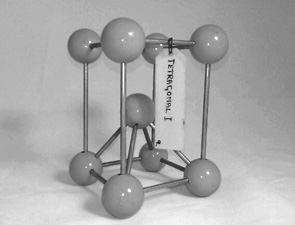Phil’s Finding’s #8: The Sensoaesthetic Side of Materials
11 July 2011


What can materials science tell us about the aesthetic and emotional side of materials? Upon first consideration it may seem that a hard scientific discipline may not shed too much light on the softer side of materials. However, upon closer inspection it becomes obvious that the way we interact with and the emotion we feel from all materials is rooted in their fundamental physical properties.
Our advanced sense of materiality is something we take for granted. Everybody has a huge amount of materials knowledge which they use in all of their interactions with the physical world around them. Your mind is like a database of sensory experiences, and when you come into contact with something your brain pieces together all relevant information and tells you what’s going on. The sense of touch alone tells us a great deal about what we’re in contact with. The major factors that we use in the identification of materials by touch are the warmth, softness and roughness. If you feel something that’s hard and cold to the touch, then you know it’s going to be something like metal, glass or stone. If you feel the surface texture, then you’re more than likely to be able to identify exactly what material it is. But that’s just the sense of touch, throw in all of your other senses then you’ve got some really powerful tools for material interactions. Through your sense of touch, smell, taste, hearing and vision you can amass a huge amount of accurate information very quickly.
So where does materials science come into the equation? Well, all of your senses are used to pick up on the physical properties of a material, and it is those physical properties which materials science sets out to investigate. For example, metals generally feel cool to the touch because they conduct heat away from your skin very quickly. So we can say that, in general, materials with high thermal conductivity will feel cool to the touch. Or if an object is soft to the touch, then we can look at physical variables such as elastic modulus or plasticity to characterise the interaction. In the next few posts, I’m going to look at individual materials, like plastics or woods, and consider how their physical properties affect the way we perceive them.